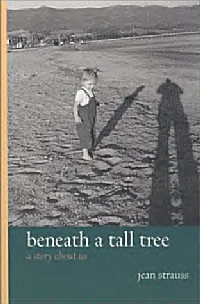Jean Strauss, the author of this new book, gave the
closing presentation at the American Adoption Congress National Conference
in April. The presentation included much of the material in this book, and
was profoundly moving to many of the conference participants, including
this writer. The book also includes other details of the author’s life and
the extensive work she has done in conducting not only her own search for
her biological parents, and for her birth mother’s birth mother, but
genealogical research she conducted that eventually went all the way back
to Charlemagne. She shows how to diagram a family tree to include both
adoptive families and biological families, which counters the frequent,
although perhaps shallow, complaint that trying to include both sets of
families is “messy,” cumbersome, and doesn’t fit with our traditional
ideas of the structure of families. The book is not, however, a guide to
searches. It is more a story of her own life and development, and of her
gradual enlargement of her concept of family. Her memories of childhood in
her adoptive family and her strong bond with that family (except for her
abusive and mentally ill adoptive brother) let us know that her need to
identify and find her biological family comes from a healthy and
deep-seated need. While most birth parents and adoptees know that this
need exists and that it has nothing to do with the quality of the adoptive
home or the genuine love of the adoptive parents, society at large does
not know that, and consequently reinforces adoptive parents’ fears, that
if their adoptee wants to search, it must he something they did wrong or
failed to do.
Ms. Strauss includes numerous pictures of her
family, and an exciting story of search and reunion, learning about many
ancestors, and how their losses set in motion other losses. She finds her
maternal grandmother as well as her birth mother, and comes to know and love
numerous siblings. She is able to take her life-long interest in history
and inspire the reader to find out more about their own ancestors, whether
adoption is involved or not, to find not only dates and names, but real stories,
the information that transforms these ancestors into real people in one’s
mind.
She gives the reader a new, broader definition
of family that includes friends who have been there along the way in life’s
journey, and she concludes, as she did in the presentation in Anaheim, that
we are all one family. She has discovered, as anyone can do with a calculator,
that, if one goes back 29 generations, one has over half a billion ancestors,
more people than were on the planet at that time, meaning that we are descended
from some of the same people in more than one way, but also showing that
in a larger, less literal sense, we are all related.
